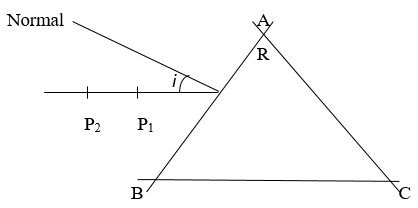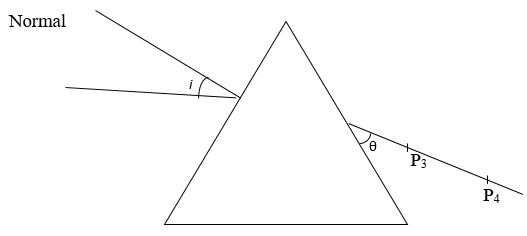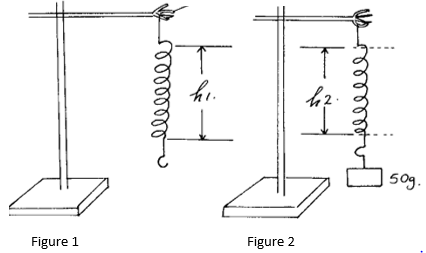PHYSICS PAPER 3 2020 CONFIDENTIAL
Question 1
- Two new dry cells and cell holders
- Jockey
- Voltmeter range 0-5V
- Ammeter 0-3 A
- 7 connecting wires
- Micrometer screw gauge – to be shared
- Nichrome wire gauge 30 mounted on millimeter scale (100 cm).
Question 2
- a triangular glass prism
- a piece of soft board
- 4 optical pins
- Two sheets of white plain paper
- A thumb pin
Question 3
- A nichrome wire 50.0cm long gauge 28
- A 50g mass
- A metre rule
- A test –tube 12 x 125(13ml)
- A retort stand, boss and clamp
NB; student to have a geometrical set.
Physics Paper 3 Questions
Question one.
You are provided with
- Voltmeter range 0-5V
- Ammeter 0-3 A
- 7 connecting wires and jockey
- Micrometer screw gauge – to be shared
- Wire mounted on millimeter scale
- Two cells , cell holders and a switch
Set up the circuit as shown below
Proceed as follows:
- Connect the circuit as shown in the figure 1 below.
- Connect the ends of wire at points A and B where, AB =L = 100cm across the terminals as shown in the figure 1 above.Close the switch and measure both current I and voltage V across the wire AB
Current I = .A (½mk)
voltage V = V (½mk)
Hence find the resistance R of the wire mounted on the millimetre scale.
R = __ (1 mark)
Measure the diameter d of the wire using micrometer screw gauge
d =..m (1 mark)
hence find the constant K from the equation below
KL = 0.785d 2R stating its SI units.
K = .. (1 marks) - Slide the jockey along the mounted resistance wire on the millimeter scale. Record the values of voltage and current using the values of length in the table.
Complete the table below. (6 marks)
Length cm 15 30 45 60 75 90 Voltage (v) Current (A) Resistance (Ω) - Plot a graph of Resistance R (y axis) against length in SI Unit. (5marks)
- Determine the slope of the graph. (3 marks)
- Given that the graph obeys the expression R = K/TL. Obtain the value of T. (2 marks)
Question Two.
You are provided with the following;
- a triangular glass prism
- a piece of soft board
- 4 optical pins
- Two sheets of plain paper
- A thumb pin
Proceed as follows;
- Place the plain sheet of paper on the soft board and pin it using the thumb pin. Trace the triangular outline of the prism on the sheet of paper (use the upper part so as to leave space for other outlines). Remove the prism and use a ruler to extend the three sides of the outline. Label the vertices of the outline A,B and C. See figure below.
- On the side AB of the triangular outline ,draw a normal at a point half-way between A and B.
- Draw a line at an angle I = 300 to the normal.Stick two pins P1 and P2 vertically on this line as shown above.
- Place the prism accurately on the outline. By viewing through the prism from side AC,stick two other pins P3 and P4 vertically such that they are on line with the images of pins P1 and P2. Remove the prism and the pins. Draw a line joining marks made by P3 and P4. Extend the line to meet AC. See figure below.
Measure and record in table below the value of angle θ - Repeat the procedures in ( c) and ( d) above for other values of I shown in table below. Complete the table.
N.B. The sheets of paper with the drawing must be handed in with this question paper.Ensure you write your name and class on the two sheets of paper.
(6 marks)Angle of incidence I (deg) 30 35 40 45 50 55 Angle θ Angle of emergence E = 90-θ -
- On the grid provided plot the graph of the angle of emergence E (y-axis) against the angle of incidence I. (5 marks)
- Use the graph to find i0 the angle of incidence at which I = E. (1 mark)
I0 =. - Evaluate
n = sin(30 +i0½) (2marks)
sin 30
Question 3
You are provided with the following apparatus;
- A nichrome wire
- A 50g mass
- A metre rule
- A test –tube
- A retort stand, boss and clamp
Proceed as follows.
- Measure the length, L, of the nichrome wire provided
L = . cm ( ½mark) - Wind the whole length of the wire tightly on the test-tube making sure that the turns are as close as possible but not overlapping. Measure the length, φ , of the coil made.
φ =.... cm (½mark) - Remove the coil from the test-tube. Straighten the first and the last turns of coil. Bend one end to make a hook.
- Count and record the number, N , of complete turns remaining on the coil.
N = (1 mark) - Measure and record the distance h1 between the end turns of the coil as shown on the figure 1 below.
- Load a 50 g mass on the coil as shown in figure 2 above. Measure and record the distance,h2 , between the end turns of the coil.
- Determine the spring constant K in S.I units. (2 marks)
- Obtain the constant, p, for the wire from the expression: (2marks)
P = 4mgR3
Kr4
Where : m is the mass used, g is acceleration due to gravity ( g = 10m/s2 ),
R = L
2ΠN
and
r = φ
2N
Download Physics Paper 3 with Confidential - 2020 MOKASA JOINT MOCKS EXAMINATION (QUESTIONS).
Tap Here to Download for 50/-
Get on WhatsApp for 50/-
Why download?
- ✔ To read offline at any time.
- ✔ To Print at your convenience
- ✔ Share Easily with Friends / Students




